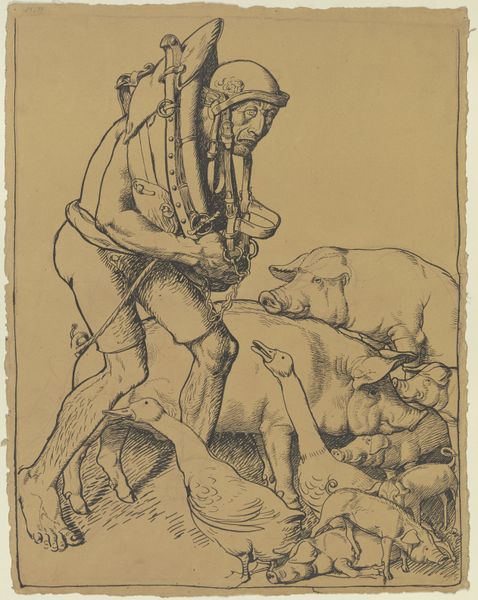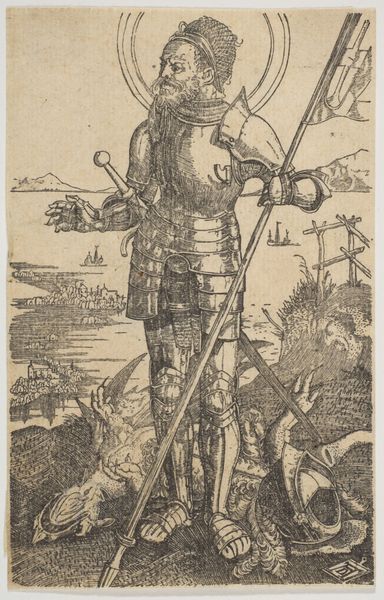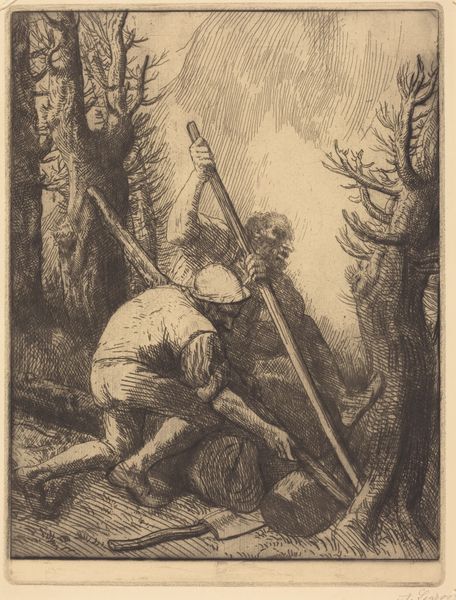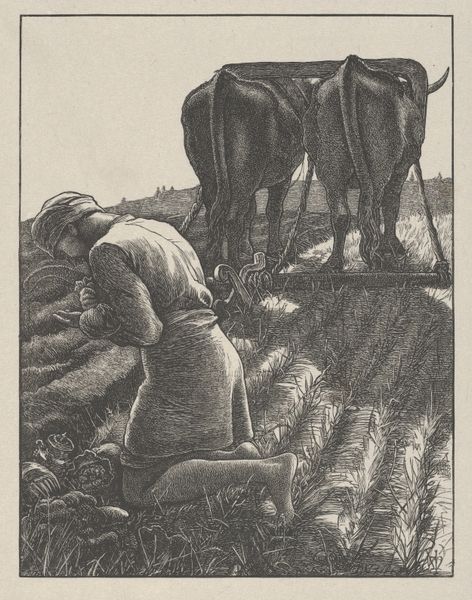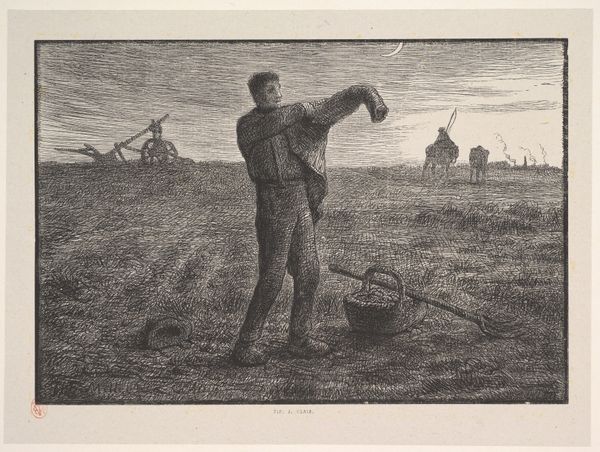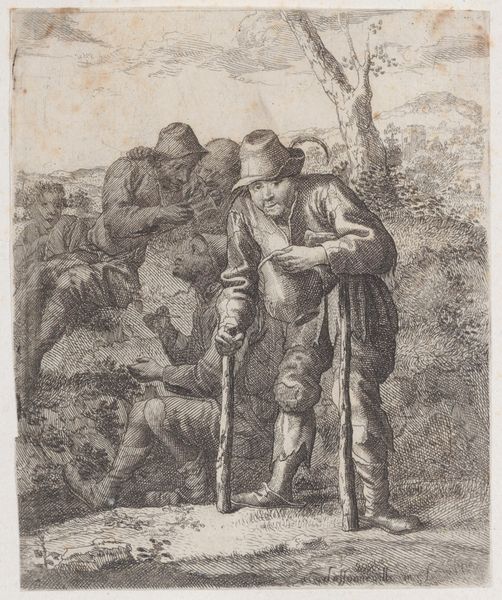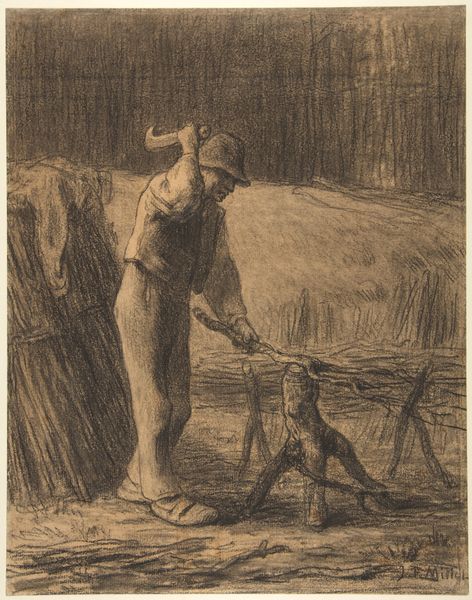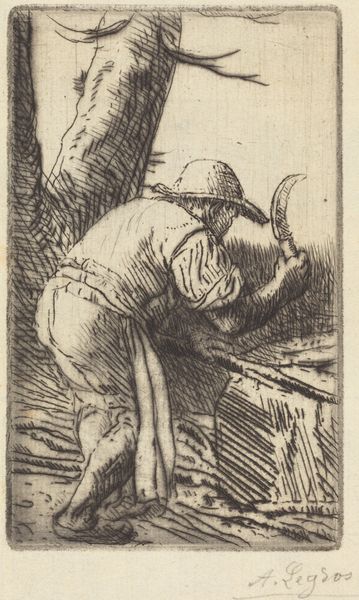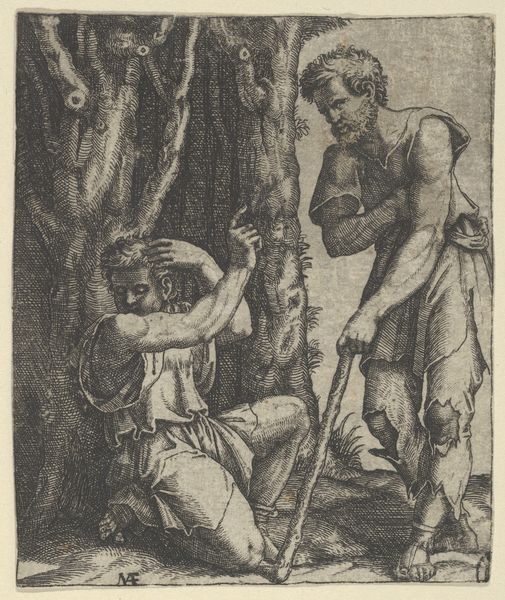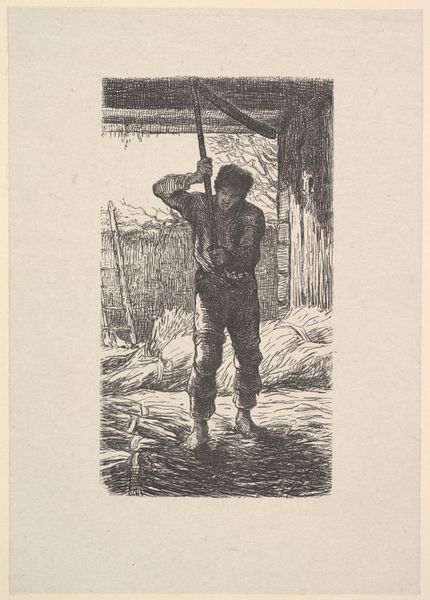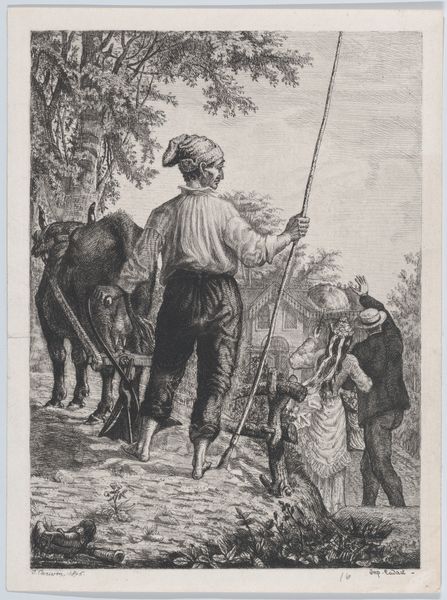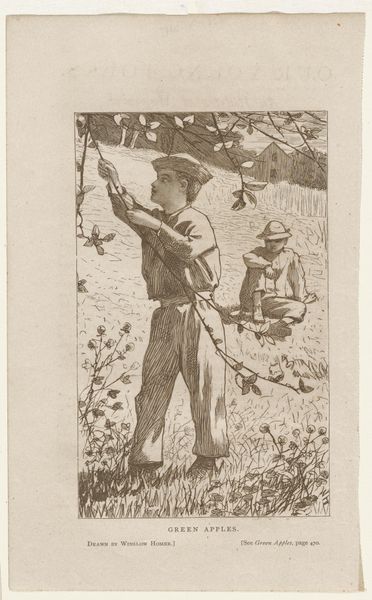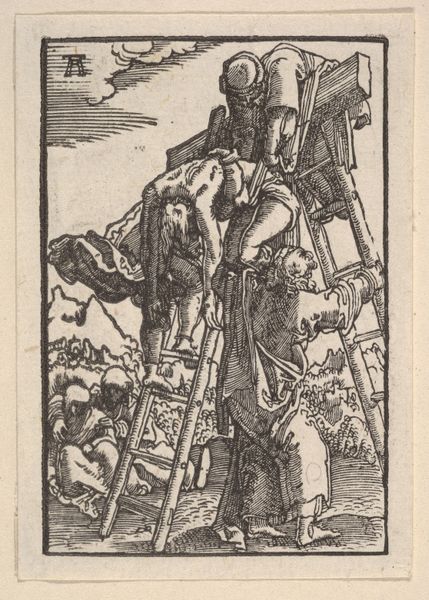
drawing, print, etching, pencil
#
drawing
# print
#
etching
#
landscape
#
pencil drawing
#
pencil
#
genre-painting
#
northern-renaissance
#
realism
Copyright: Public Domain
Editor: This is Fritz Boehle’s "Gardener Binding a Tree," an etching from 1897, housed here at the Städel Museum. The scene depicts agricultural labour, and what strikes me most is the quiet dignity it imbues in the everyday. How do you interpret this work, especially considering its historical context? Curator: Boehle's image presents a compelling narrative about labour and its relationship to the land at the fin de siècle. We see not just an idyllic scene but a glimpse into the lives of those directly engaged in shaping the environment. The Northern Renaissance style combined with realism gives it this specific feeling. Consider the social implications. Who is represented here, and whose story remains untold? How does it either challenge or perpetuate social hierarchies? Editor: It’s interesting you mention the untold stories. The etching, while detailed, focuses very closely on the labourer. It also strikes me as a very masculine portrayal of agriculture; there’s little space given to women’s involvement. Curator: Exactly! By foregrounding male labour and perhaps subtly erasing female contributions, Boehle engages in a dialogue – perhaps unconsciously – about gendered divisions of labour at the time. Are there visual cues that reinforce this gendered reading? Could it be that he highlights the role of manual labor, which, at the time, was seen as a distinct form of masculinity? Editor: I hadn't considered it that way before. I guess the man's sturdy build and the visible exertion subtly underscore the masculinity of the work. The fact that we see also the horse used to plough the field definitely add an important value of collaboration and taming nature for survival, which were indeed gendered. Curator: These are valuable connections. By questioning whose labour is valued and how it's represented, we unveil not just art history but the social structures that art both reflects and shapes. Editor: I’ll definitely look at other depictions of labour with a more critical eye now, questioning whose stories are visible and whose are obscured. Thanks! Curator: Likewise! Reflecting on Boehle’s choices pushes us to reconsider the politics embedded in seemingly simple representations of labour.
Comments
No comments
Be the first to comment and join the conversation on the ultimate creative platform.
